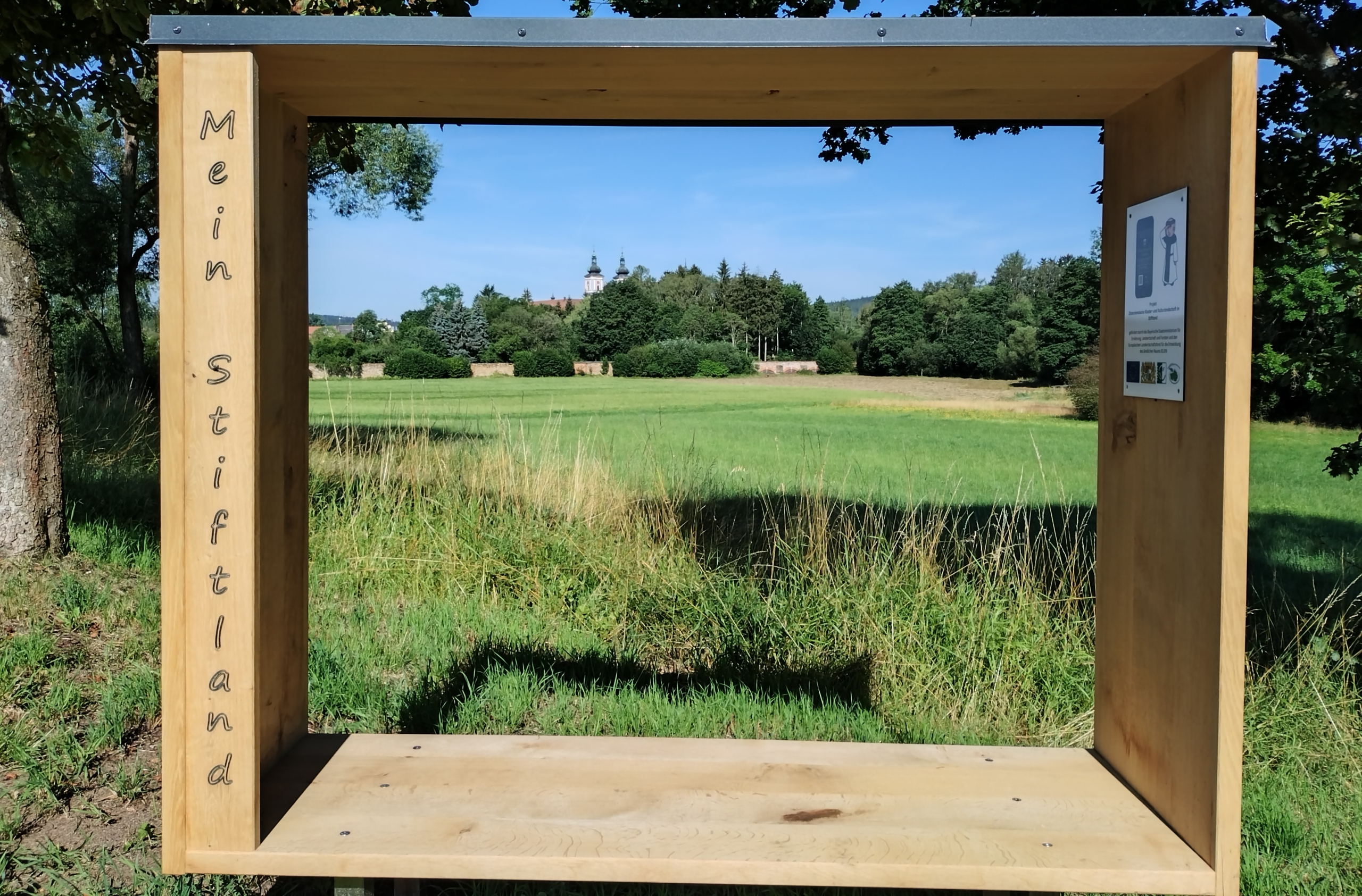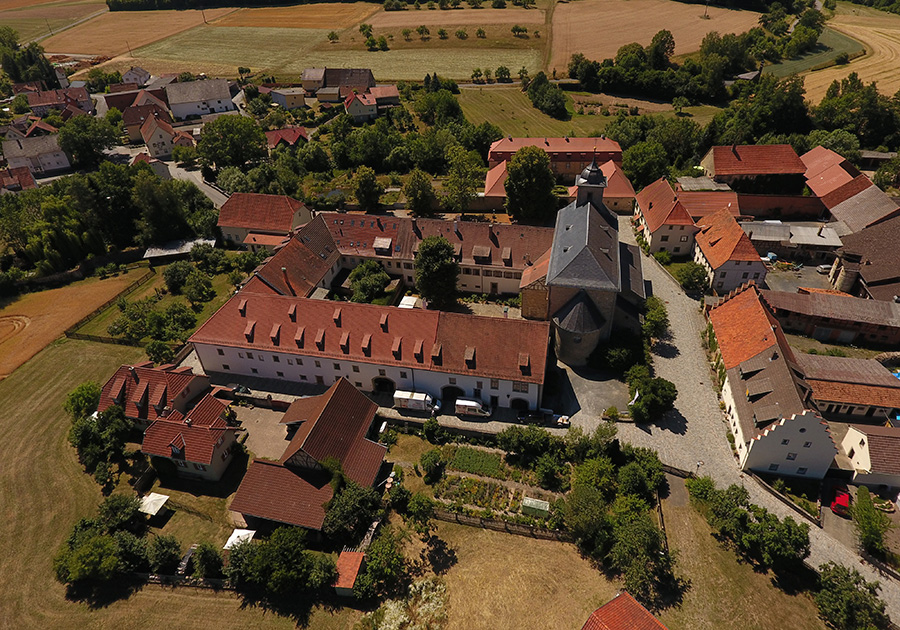
Wechterswinkel Monastery: Exhibition Kloster erLEBEN – Women’s lives in the Middle Ages
In the Middle Ages, the vast majority of the population lived in the countryside. Women carried out a variety of tasks in addition to the strenuous work in the fields: They prepared the daily meals, washed clothes, hauled water and made clothes for their families. The only way to escape the grueling cycle of childbearing and hard physical labor was to live in a monastery. It was only in the flourishing cities of the late Middle Ages that new opportunities opened up for women. Women were successful in trade, they worked in many trades, ran merchant stores or sold their products. The economic development of the cities had a lasting effect on the position of women. The exhibition highlights the different roles of women in the Middle Ages. The many tasks that women had to perform are vividly illustrated, from basket weaving to feather grinding, from gathering herbs to brewing beer . The exhibition "Women's lives in the Middle Ages" was conceived by the art historian Dr. Alice Selinger, Dreieich. Saturday, 15.03.2025 to Sunday, 22.06.2025 EXHIBITION The exhibition is complemented by an accompanying program for different age groups . Further information will be available from March at www.kloster-wechterswinkel- kultur.de and in the Rhön-Grabfeld cultural calendar. Wednesday - Sunday and public holidays from 13:00 - 17:00. Wechterswinkel MonasteryUm den Bau 6, Wechterswinkel, Bastheim, 97654 Bastheim OT Wechterswinkel
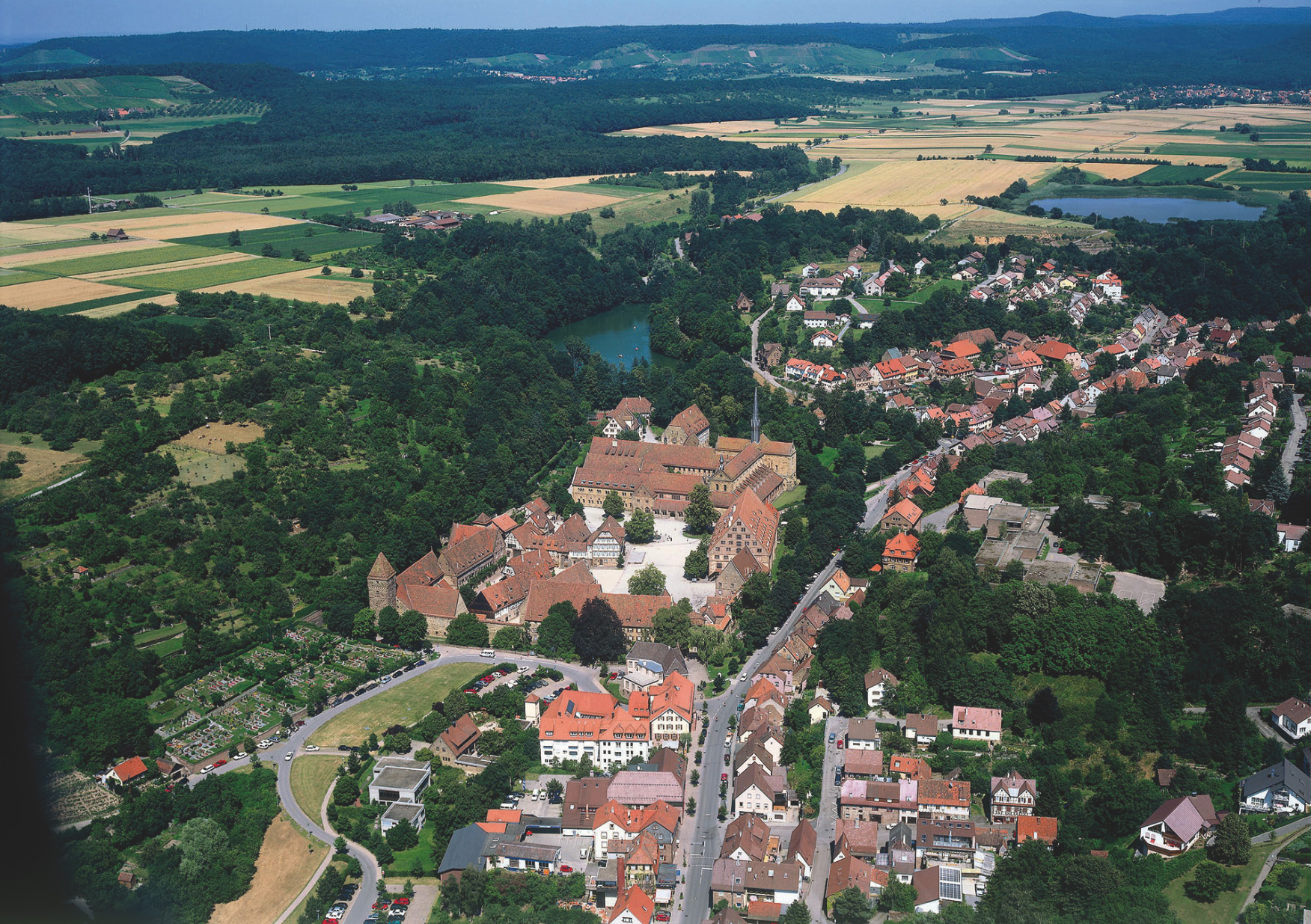
Maulbronn/Stromberg Monastery Landscape: “European Heritage Label for Cistercian Cultural Landscapes” ceremony and reception
Maulbronn Town Hall (former fruit cellar of Maulbronn Monastery)Ceremony and reception to mark the receipt of the European Heritage Label for Cistercian Cultural Landscapes "Cisterscapes connecting Europe" and the inauguration of the reconstruction of the Gothic wayside shrine in the Maulbronn Old Cemetery on Sunday, March 16, 2025, at 11 a.m. in the Maulbronn Town Hall (former fruit cellar of Maulbronn Monastery). Participation in the Cultural Heritage Label is another outstanding distinction of the UNESCO World Heritage Site Maulbronn Monastery and its cultural landscape developed by the former Cistercian monks . Maulbronn Monastery was situated between the Rhine, Neckar and Enz rivers and has left its lasting mark on numerous places and landscapes - in agriculture, viticulture, fruit growing and in the forests. The innovative hydraulic engineering and engineering skills of the Cistercians in the Middle Valley were outstanding. What was produced in the farmsteads and granges and collected in the Pfleghöfe was brought to market via the town courtyards. The former economy of the Cistercians in the region around Maulbronn can still be clearly seen today. Invitation_flyer_monastery_landscape_Maulbronn
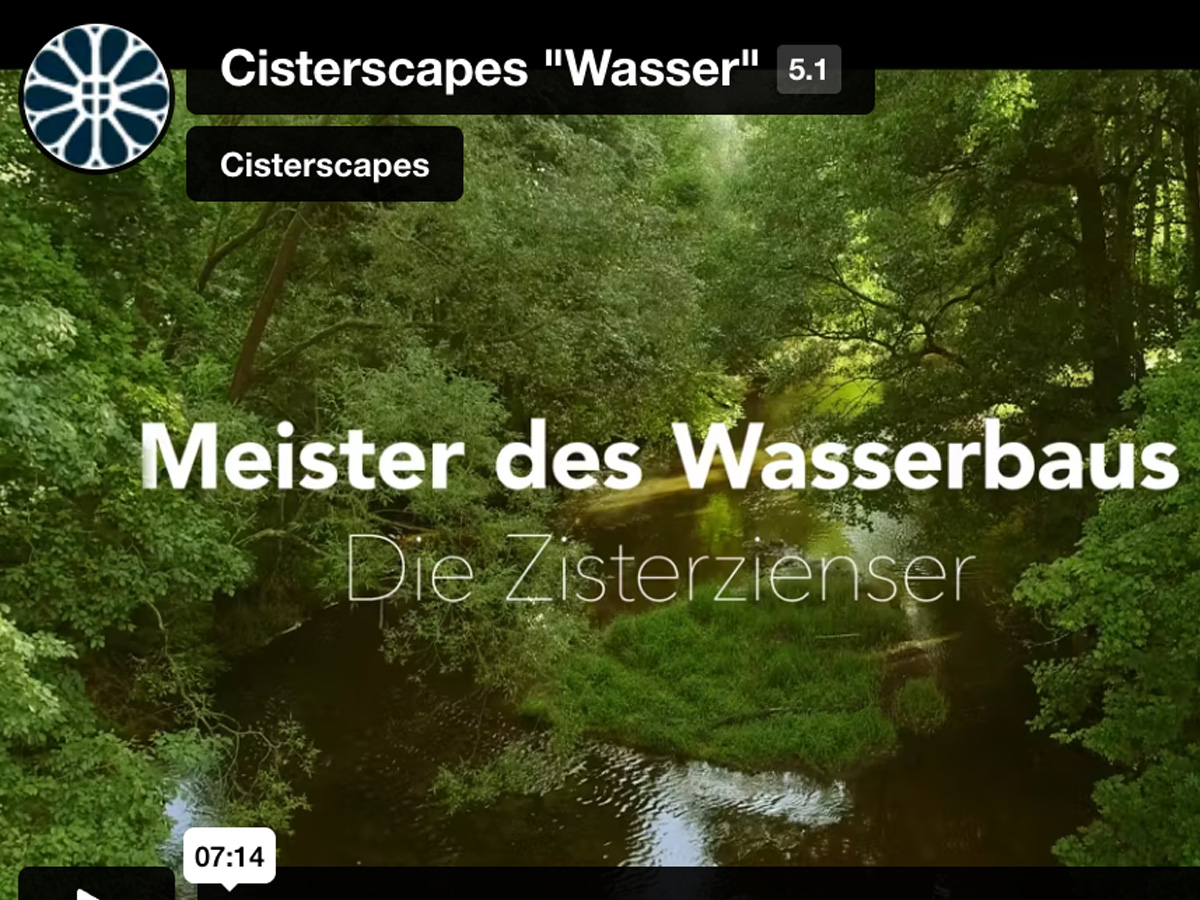
Environmental Education Center (UBiZ) Knetzgau: Water topic – lecture on dealing with drought and heavy rainfall
PRACTICAL EXAMPLES IN GARDEN AND HOUSE How can garden owners respond to long periods of drought? How can you collect and use as much water as possible during heavy rainfall? What can you do in your garden and home to be protected against flooding? The speaker and natural gardener, who has herself been affected by floods , has been working on this topic for years and shows examples of how to better deal with these challenges. Speaker: Nina Köberich free of charge, donation welcome Location: "Offener Treff", Eschenauer Str. 5, 97478 Knetzgau OT Westheim
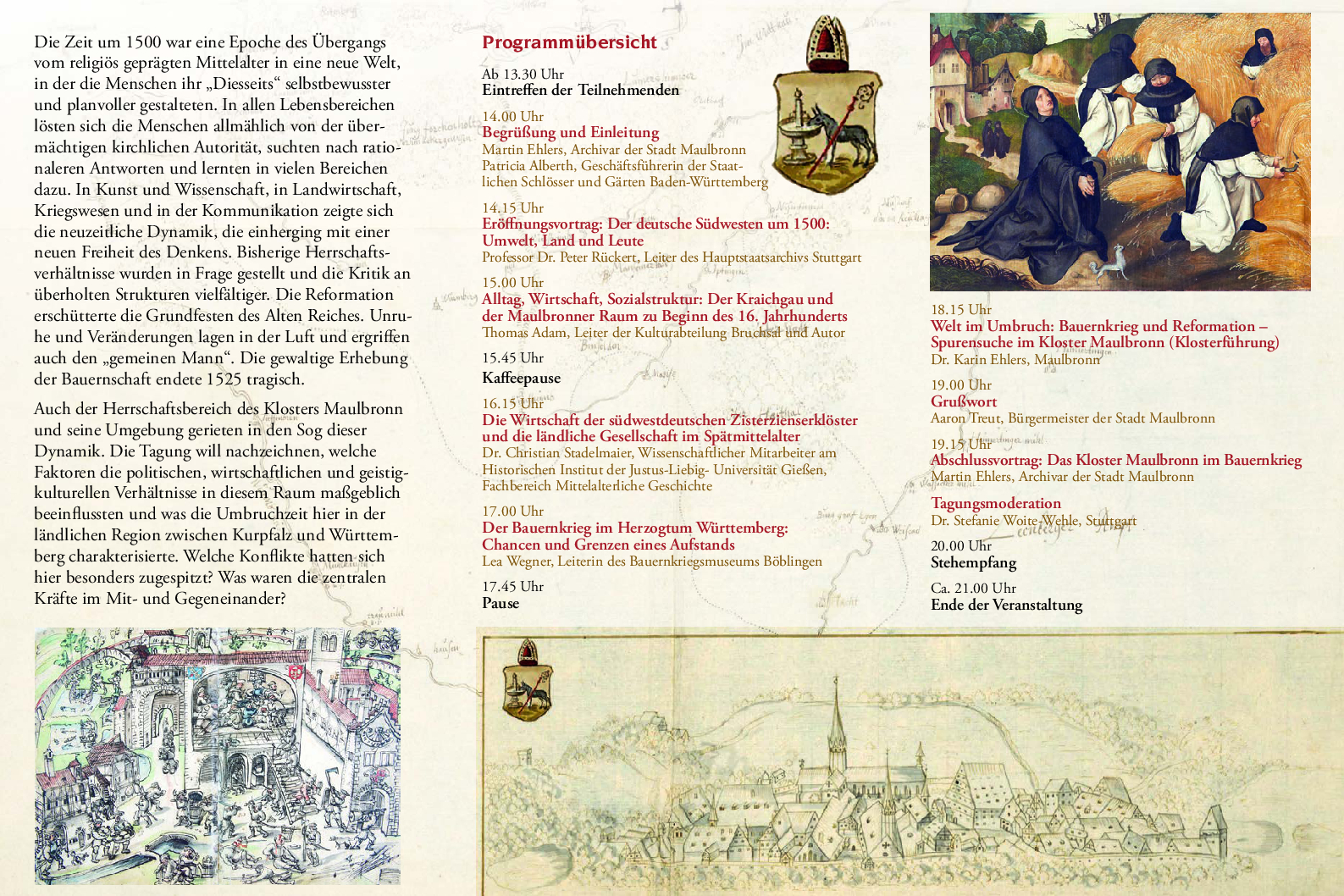
Maulbronn Monastery: “Conference: Rural world in upheaval. The Peasants’ War and its conditions in the domain of Maulbronn Monastery”
Town Hall, Klosterhof 6, 75433 Maulbronn Klosterhof 6, Maulbronn, DeutschlandThe period around 1500 was an era of transition from the religiously influenced Middle Ages to a new world in which people shaped their "this world" in a more self-confident and planned manner. In all areas of life, people gradually broke away from the overpowering ecclesiastical authority, sought more rational answers and learned new things in many areas. In art and science, in agriculture, warfare and communication, the dynamics of the modern age were evident, accompanied by a new freedom of thought. Previous power relations were called into question and criticism of outdated structures became more diverse. The Reformation shook the foundations of the old empire. Unrest and change were in the air and also affected the "common man". The huge uprising of the peasantry ended tragically in 1525. The domain of Maulbronn Monastery and its surroundings were also caught up in this dynamic. The conference aims to trace the factors that significantly influenced the political, economic and intellectual-cultural conditions in this area and what characterized the period of upheaval here in the rural region between the Electoral Palatinate and Württemberg. Which conflicts came to a head here? What were the central forces at work here? Information and registration Thursday, April 3, 2025 Participation fee: none Limited number of participants. We kindly ask you to register at: Stadt Maulbronn, Postfach 47, 75429 Maulbronn Phone 07043 103-0 Email: info@maulbronn.de www.maulbronn.de Organizer Stadt Maulbronn in cooperation with the State Palaces and Gardens of Baden-Württemberg (SSG) The event is part of the event cycle "500 Years of Peasants' War in the Kraichgau" as well as the supporting programme of the Great State Exhibition 500 Years of Peasants' War "UFFRUR!". By participating in the event, you agree to the possible publication of photographs and film recordings. Note: Due to high demand, the conference has been moved to the Stadthalle, Klosterhof 6, Maulbronn.
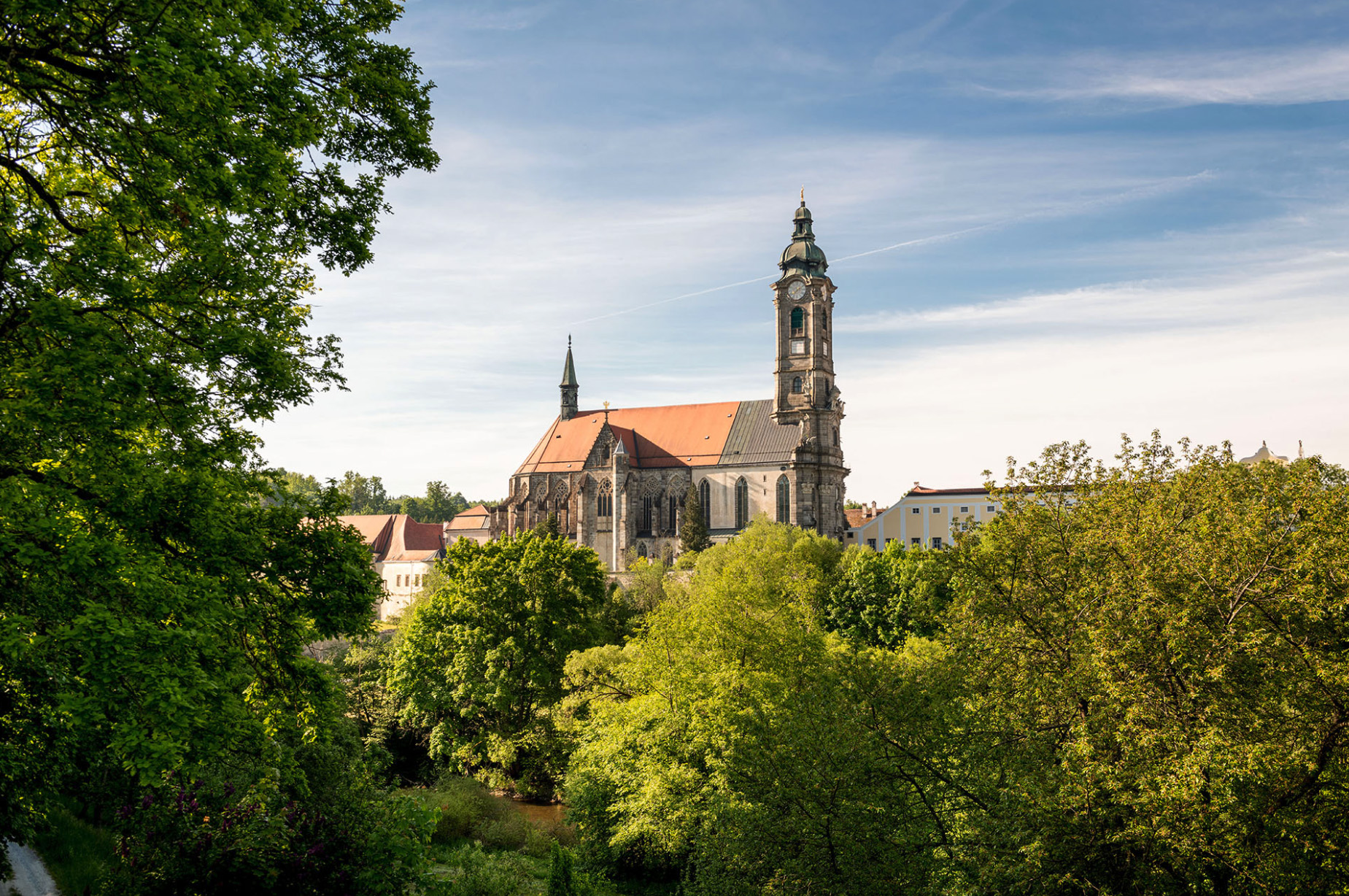
Start of the season
Zwettl Monastery Zwettl Abbey 1, Zwettl, Lower Austria, ÖsterreichZwettl Abbey starts the new tourist season on Palm Sunday. From now on, guided tours of the monastery will once again take place daily. On tour three, which leads into the baroque library with its magnificent frescoes by Paul Troger, visitors can also see the special exhibition "Cisterscapes - we are European cultural heritage".
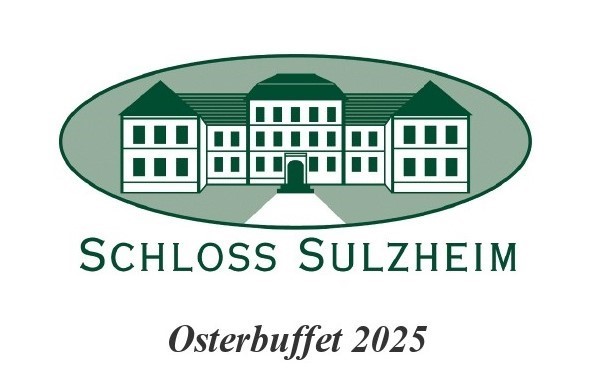
Sulzheim Castle: Easter buffet
Celebrate Easter with us at Schloss Sulzheim - under the motto "Here the lord of the castle cooks for himself", a delicious, extensive buffet awaits you. A delicious soup, fresh salads, three main courses (including fish and vegetarian options), tempting desserts, a glass of sparkling wine or orange juice and coffee & cake at the end are included in the price of €42.50 per person (children 6-13 years €21 / < 6 years free of charge). We look forward to your visit and your reservation under the telephone number: 09382-8628. Sulzheim Castle Wilhelm-Behr-Strasse 34 97529 Sulzheim
Altenberg monastery market
Altenberg Monastery , DeutschlandIn 2024, the Altenberg Monastery Landscape was awarded the European Heritage Label together with 16 other monastery landscapes in 5 European countries. To mark the award of the European Heritage Label to the Altenberg monastery landscape, the Altenberg Beautification and Cultural Association (VKA), together with the Rheinisch-Bergisch district and the municipality of Odenthal, is organizing a monastery market that reflects the life, work and cuisine of the Cistercians and at the same time provides entertainment for young and old. On the last weekend of the Easter holidays, 26 and 27 April 2025, a small market with artisanal and regional products as well as culinary, cultural and children's programs will take place at Altenberg Cathedral. There will also be guided tours of Altenberg and the monastery landscape. Program Monastery market: Saturday 13:00 -19:00 & Sunday 10:00 -18:00 - A diverse range of exhibitors from the craft sector, region and monastery Musical stage program: Saturday 17:00 - "Small is beautiful" Sunday 12:00 - "Loup & Hecker" 15:30 - "De Knippschaff" with ex-Bläck Fööss Bömmel Lückerath and Kafi Biermann Music in the cathedral: Sunday 2:30 pm - Sacred music Guided tours: Saturday 11:00 a.m. - Cathedral tour - meeting point in front of the cathedral portal 2:00 p.m. - Cathedral tour for children on the animals in Altenberg Cathedral with Pastor Posche - meeting point in front of the cathedral portal 14:00 pm - "Streuobst - Klösterliches Erbe der Zisterzienser" with tasting - LuGeV (guided tours 7€) - meeting point Baroque archway opposite Altenberg Cathedral 3:00 pm - Exploring the Altenberg monastery landscape Xandra Wildung, Head of European Heritage Site - meeting point in front of the cathedral portal Sunday 14:00 - "Brewing art of the Cistercians" with tasting LuGeV (guided tours 7€) - meeting point Baroque archway opposite Altenberg Cathedral 16:00 - Cathedral tour with Pastor Taxacher - meeting point in front of the cathedral portal Saturday and Sunday - covered wagon and carriage ride around Altenberg all day Children's program: Saturday 14:00 - Cathedral tour to the animals in the cathedral with Pastor Posche - meeting point in front of the cathedral portal Saturday and Sunday - Discover the cultural and monastery landscape all day - Cisterscapes The Cistercians and the water - The Sommelière Paper making and water mill construction - paper mill Alte Dombach Small petting zoo with donkeys and farm animals Culinary delights: Saturday 13:00 - 21:00 & Sun 10:00 - 19:00 - Gastronomic offer in the spirit of the Cistercian culinary heritage

The foundation of monasteries in the Middle Ages using the example of Zwettl Abbey
Festsaal Raiffeisenbank Waldviertel Mitte Country road 23, Zwettl, Lower Austria, ÖsterreichIn his lecture, Franz Ettmayer also describes the influence of territorial and ecclesiastical personalities on the fate of our country. After the political order of Charlemagne, the Carolingian Empire began to disintegrate. Before and after the turn of the millennium, political reorganization began between the Enns and the Vienna Woods and north of the Danube. The work of the Cistercian Bernard of Clairvaux and his monastic reform work in France reached as far as Zwettl in the Waldviertel. How and to what extent ecclesiastical personalities influenced the development of our country is the focus of this lecture. Following the lecture, there will be an opportunity for discussion over a snack.
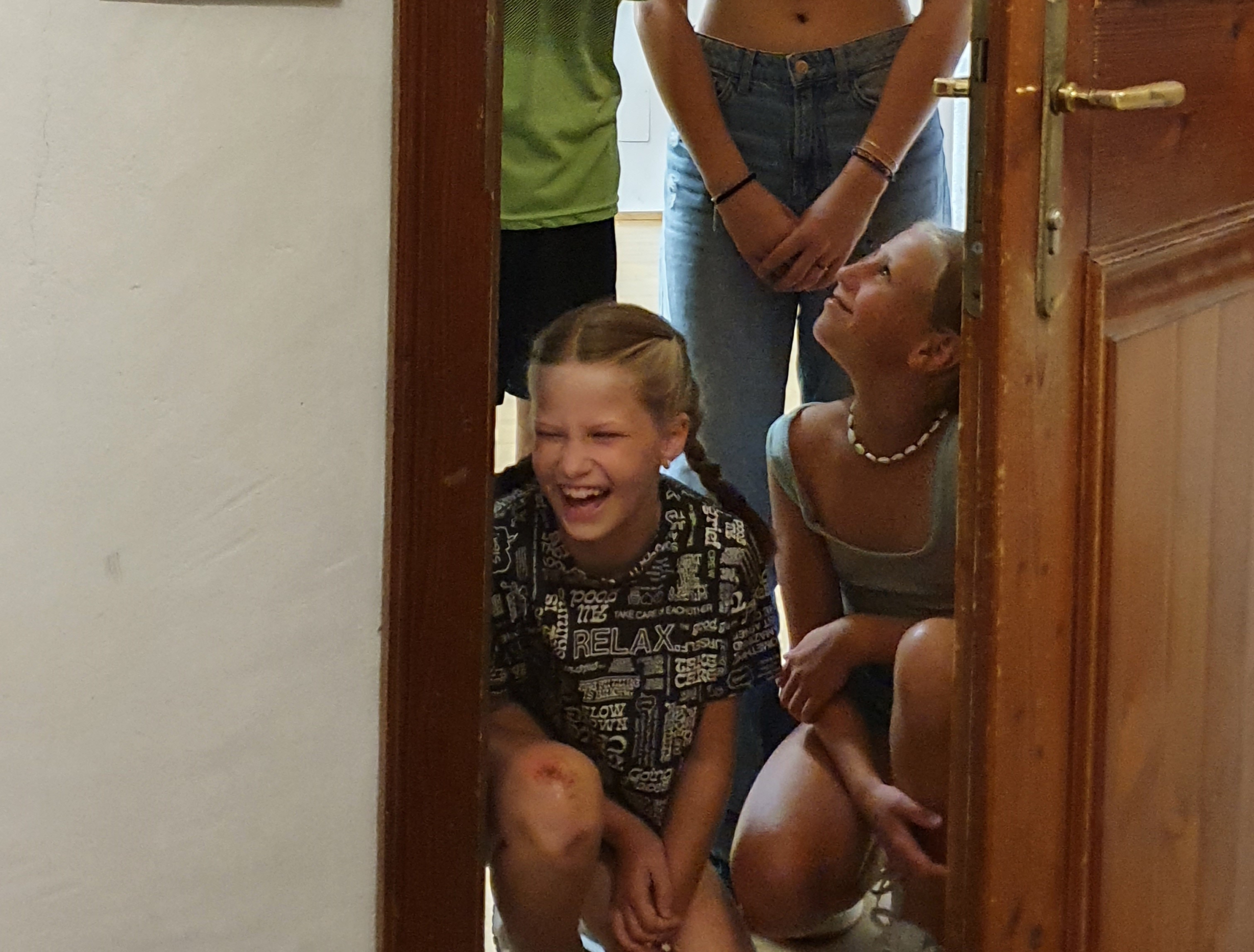
Exhibition “Cultural landscape as European heritage”
Old town hall Zwettl Sparkassenplatz 3, Zwettl, Lower Austria, ÖsterreichWhat is a Cistercian monastery landscape? An exhibition in the old town hall of Zwettl explores this question. This presentation is freely accessible to all interested parties until fall 2025. The exhibition is accompanied by materials for different age groups, which can be used to playfully explore the elements of a monastery landscape. Curious?

